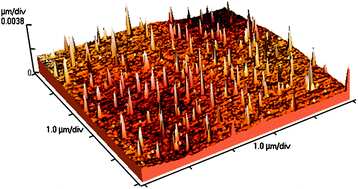Atmospheric Surface Science
An area of interest for our group is investigating the morphology of films formed when environmentally-important molecules adsorb onto dust-like and soot-like surfaces. Carbon-containing emissions (e.g., from combustion engines) condense onto dust/soot particles in the environment, resulting in changes to particle surface properties, such as cloud-condensing ability (important for climate change), and altering the reactivity of the adsorbate compound (which affects the chemical's lifespan in the environment). These changes will depend on the film morphology (formation of islands or uniform coating). Similar coating processes occur with other air pollutants, such as oleic acid (a by-product of meat cooking).

- E. Garland, A. Lee, T. Baer, and L. I. Clarke, "Growth Dynamics and Morphology of Oleic Acid Vapor-Deposited on a Silica Surface," J. Phys Chem C 113, 2141 (2009). (journal) [paper]
- E. R. Garland, E. P. Rosen, L. I. Clarke, and T. Baer, "Structure of submonolayer oleic acid coverages on inorganic aerosol particles: evidence of island formation," Phys. Chem. Chem. Phys. 10, 3156 (2008). (journal) [paper]